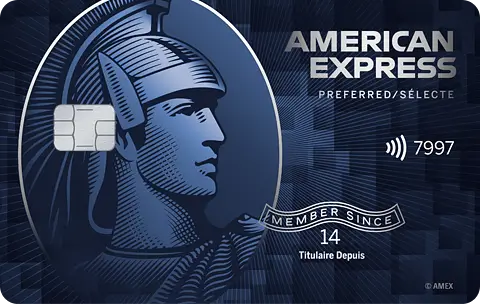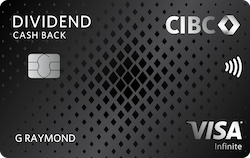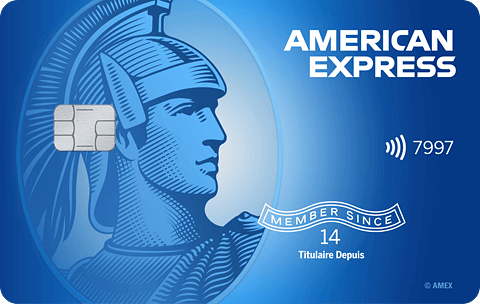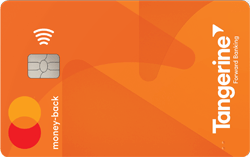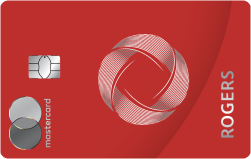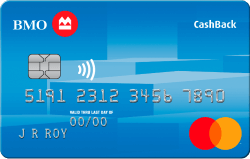Best cash back credit cards in Canada
Searching for the perfect card? Compare your options with our interactive tool, and filter results based on rewards value, annual fees, income requirements, and more.
Known for their simplicity and versatility, cash back cards eliminate the hassle of tracking loyalty points and offer the ultimate reward—a percentage of what you spend back in cash.
If you want to maximize your cash back rewards, start with one of these three cards, which suit the preferences and habits of most Canadians. Or keep scrolling for a curated list of recommendations across even more categories.

Earn 4% back on groceries and gas, and 2% on everything else you buy.

Earn 4% on groceries and recurring payments (includes eligible utility bills, insurance premiums, and more).

Earn 2% in up to 3 spending categories of your choice. Plus get $80 cash bonus upon approval.
MoneySense is an award-winning magazine, helping Canadians navigate money matters since 1999. Our editorial team of trained journalists works closely with leading personal finance experts in Canada. To help you find the best financial products, we compare the offerings from over 12 major institutions, including banks, credit unions and card issuers. Learn more about our advertising and trusted partners.
The best cash back credit cards in Canada for 2024
Each cash back credit card has its benefits and drawbacks. Here we break down the top cards in Canada for different categories, and highlight what sets each card apart.
| Best card by category | Why we love it |
|---|---|
| Best overall cash back credit card SimplyCash Preferred Card from American Express* Annual fee: $120 | 4% back on groceries and gas 2% on all other purchases (everything from online shopping to travel and more) |
| Honourable mention: Best overall CIBC Dividend Visa Infinite Annual fee: $120 | 4% back on groceries and gas, and Visa’s widespread acceptance |
| Best no-fee cash back card SimplyCash from American Express* Annual fee: $0 | 2% back on groceries and gas At least 1.25% on all purchases, with no annual fee |
| Honourable mention: Tangerine MoneyBack Card* Annual fee: $ | 2% back in up to 3 bonus categories (choose your own bonus categories, from options including groceries, dining, and more) Get $80 cash bonus upon approval with Ratehub.ca |
| Best flat-rate cash back card Rogers Red World Elite Mastercard* Annual fee: $0 | A flat 1.5% back on all your Canadian purchases (or 2% back for Rogers, Fido and Shaw customers), plus enough back on all U.S.-dollar purchases to cover forex fees |
| Best cash back credit card for students BMO CashBack Mastercard for students* Annual fee: $0 | 3% back on groceries and the ability to redeem rewards at any time |
Best overall cash back credit card
At a glance: This cash back card offers impressive earn rates on grocery and gas purchases, two of the most-used spending categories. Crucially, it also has the highest base earn rate in Canada, at 2%. Combined with solid insurance coverage, access to Amex benefits and free supplementary cards, this is hands down one of the best credit cards in Canada.
SimplyCash Preferred from American Express
- Annual fee: $120
- Earn rate: 4% cash back on eligible gas and grocery purchases; 2% cash back on everything else
- Welcome offer: You can earn a $40 statement credit for each monthly billing period in which you spend $750 in purchases on your card.
- Annual income requirement: None
- Recommended credit score for approval: 660 or higher
- Interest rates: 20.99% on purchases, 21.99% on cash advances
Pros
- This card pairs healthy earn rates with spending caps that the typical user won’t ever reach, so you can get the most out of every dollar spent. The real benefit here is the minimum 2% cash back on every single purchase you make.
- There’s no specified income requirement for approval, making this a super accessible cash back card.
- The card comes with Amex benefits like dining and retail experiences, as well as Amex Front of the Line, which gives you early access to event tickets. Monthly Amex Offers tailored to your spending habits can be downloaded through your Amex app or online account.
- Free supplementary cards help you maximize the card’s cash back potential.
Cons
- Amex isn’t accepted at as many places as Visa or Mastercard. Those who shop at Loblaw banner stores, for example, like Real Canadian Superstore and No Frills, would likely want to carry a secondary card.
- Redemptions aren’t flexible. You’ll receive your cash back as a statement credit once annually, in September.
Honourable mention
At a glance: Like the SimplyCash Preferred Card, this one comes with some of the best cash back rates on groceries and gas. And there’s no limit on the total amount of cash rewards you can earn.
CIBC Dividend Visa Infinite
- Annual fee: $120
- Earn rates: 4% cash back on eligible gas, EV charging and grocery purchases; 2% on dining, daily transit and recurring payments; and 1% on everything else
- Interest rates: 20.99% on purchases, 22.99% on cash advances, 22.99% on balance transfers
- Welcome bonus: You can earn 10% cash back welcome bonus of up to $250 (first 4 statements). Offer not available to QC residents. Terms and conditions apply.
- Recommended credit score for approval: 725 or higher
- Annual income requirement: Personal income of $60,000 or household income of $100,000
Pros
- Spending categories are very broadly defined with this card, meaning that you’ll get boosted rewards on more purchases. The transportation category, for example, includes taxis, ride sharing and public transport.
- When you link your card with Journie Rewards, you will save 3 cents per litre every time you fill up at Pioneer, Fas Gas, Ultramar and Chevron gas stations. Every time you reach 300 Journie Rewards points, you’ll get an additional 7 cents off per litre.
- You can get your cash back whenever you need it.
Cons
- The base earn rate of 1% is pretty standard. However, that’s half the base rate of the SimplyCash Preferred Card.
- With a $60,000 minimum annual income ($100,000 household), it may be more difficult to qualify for this card than some others.
Best no-fee cash back card
At a glance: Unlike many no-fee cards, the SimplyCash Card doesn’t skimp on the base rate. At 1.25%, it’s among the highest in this category so you’ll have more earning power. Accelerated rates of 2% back on groceries and gas make this a strong contender in the cash back category.
SimplyCash from American Express
- Annual fee: $0
- Earn rate: 2% cash back on eligible gas and grocery purchases up to $300 annually; 1.25% cash back on everything else
- Welcome offer: You can earn a $10 statement credit for each monthly billing period in which you make at least $300 in purchases (for a total value of up to $100).
- Annual income requirement: None
- Recommended credit score for approval: 660 or higher
- Interest rates: 20.99% on purchases, 21.99% on cash advances
Pros
- Any purchases outside or beyond those in accelerated categories will get you a return of 1.25% with no limits. This is a particularly stellar return considering most no-fee cards have a base earn rate of 0.5%.
Cons
- American Express is less widely accepted in Canada than Visa or Mastercard, so you might want to also carry a secondary card for purchases at certain stores.
- Your earnings are applied as a statement credit once per year rather than on an as-needed basis.
- The cap of $300 cash back on groceries and gas (on the first $15,000 spent) is relatively low for bonus categories, but this card makes up for it with a generous earn rate on all subsequent purchases.
Honourable mention
At a glance: The Tangerine Money-Back Credit Card takes a slightly different approach to providing a no-fee cash back card by allowing you to pick up to three bonus categories, earning at 2% each, from a possible list of ten. Plus, you can change your categories as needed, with 90 days’ notice.
Tangerine Money-Back Credit Card
- Annual fee: $
- Earn rates: 2% in up to 3 categories of your choice (including groceries, gas and dining) and 0.5% cash back on everything else
- Welcome bonus: You can
- Annual income requirement: Personal or household income of $12,000
- Recommended credit score: 660 or higher
- Interest rates: % on purchases, % on cash advances and % on balance transfers
Pros
- By letting you pick your 2% bonus categories, this card offers unmatched flexibility. You can get a third bonus category at 2% by automatically depositing your earnings into a Tangerine account.
- You aren’t locked into your bonus categories, but rather can change them as you want with 90 days’ notice. For example, if you have a renovation coming up, you could choose home improvement and furniture as two of your spending categories.
- Cards for additional users are free and there are no caps on your cash back earnings.
- If you meet the income requirements of $60,000 personally or $100,000 for the household, you’ll automatically be considered for the no-fee Tangerine World Mastercard, which comes with the same earn rates, but more perks like free Boingo Wi-Fi and Mastercard Travel Pass Provided By DragonPass which gets you access to airport lounges.
Cons
- The only insurance coverage is purchase assurance and extended warranty, which are two of the most basic coverages.
- Redemptions are only semi-flexible, with earnings paid out monthly.
- This card has an income requirement of $12,000 per year. That makes it accessible, but some cards, like our top pick, don’t have a specified income requirement.
Best flat-rate cash back card
At a glance: If you want the simplicity of a consistent and high 1.5% return on all your Canadian purchases, without worrying about bonus categories or spending limits, this no-fee card is a good option. Plus, as a World Elite Mastercard, you’ll get access to extras like free Boingo Wi-Fi and Mastercard Travel Pass Provided By DragonPass, which gets you access to airport lounges. The one thing to watch out for are the eligibility requirements.
Rogers Red World Elite Mastercard
- Annual fee: $0
- Earn rate: 1.5% cash back on all purchases, or 2% back for Rogers, Fido and Shaw customers; 3% cash back on all purchases in USD
- Welcome bonus: You can This card does not have a welcome bonus at this time.
- Annual income requirement: Personal income of $80,000 or household income of $150,000
- Recommended credit score for approval: 725 or higher
- Interest rates: 20.99% on purchases, 22.99% on cash advances, 22.99% on balance transfers
Pros
- With an earn rate of 1.5% on all purchases in Canada (in-store and online), this card offers solid, easy rewards. And as a Mastercard, it’s one of the best cards to use at Costco, a store that doesn’t accept Visa or American Express.
- Rogers, Fido and Shaw customers earn even more: Get an additional 0.5% cash back on all purchases, plus a 1.5x redemption bonus when you redeem for Rogers, Fido or Shaw purchases—that’s equal to 3% back.
- If you frequently shop in the U.S., it’s like having a no forex fee card because the accelerated 3% earn rate on purchases in U.S. dollars covers the 2.5% foreign transaction fee.
- Unlike most World Elite Mastercards in Canada, this card has no annual fee.
- You can redeem your rewards against purchases on your card as soon as you have $10 banked.
Cons
- As a World Elite Mastercard, the $80,000 personal and $150,000 household income requirements puts it out of reach for some.
- You will have to spend $15,000 annually to maintain eligibility or your account may be switched to another Rogers Bank credit card.
Best cash back credit card for students
At a glance: With a 3% return on groceries, flexible redemptions and no annual fee, our pick for the best student credit card for cash back is the BMO CashBack Mastercard. An additional boosted spending category of 1% on recurring bills offers more help to cash-strapped students.
BMO CashBack Mastercard for Students
- Annual fee: $0
- Earn rates: 3% cash back on groceries (on the first $500 per month), 1% on recurring bills and 0.5% on everything else
- Welcome offer: You can earn 5% cash back in your first 3 months. Conditions apply.
- Annual income requirement: None
- Recommended credit score: 660 or higher
- Interest rates: 20.99% on purchases, 22.99% on cash advances and 22.99% on balance transfers
Pros
- Grocery shopping is one of the most important bonus categories for students, and 3% cash back is the highest return on groceries for a no-fee credit card in Canada.
- You can redeem your cash when you need it (with a $25 minimum) as a statement credit or deposit it into your BMO chequing, savings or InvestorLine account.
Cons
- You’ll only earn rewards on the first $500 you spend in each bonus category. That should be enough for most students, but it’s still more restrictive than other cards. For example, if you spend $200 per week on groceries ($800 per month), you’ll earn 3% on the first $500 and 0.5% on the other $100, for a total of $15.50 in cash back per month.
How we determine the best cash back cards
Our editors apply their credit card expertise and knowledge of Canadians’ financial goals to come up with selection criteria that matches the needs of the intended cardholder. With cash back cards, what matters most is generally the return on your spending—the best cards have high earn rates, across multiple categories, with few or unnoticeable caps on spending. Beyond that, we consider annual fees, eligibility criteria and other factors, specific to the category. The addition of links from affiliate partners has no bearing on the results. Read more about our selection process and about how MoneySense makes money.
How to make the most of your cash back credit card
Never carry a balance
The payoff with a cash back credit card is the cash—a reward that is easily cancelled out by the penalties and interest accrued if you carry a balance. Like all rewards credit cards, cash back cards tend to carry annual interest rates at the higher end, usually around 19.99%. At this rate, unpaid debt will rapidly accumulate interest charges that eat up any gains you’ve made. As long as you pay off your balance in full every month, you’ll avoid this pitfall, but if you find you regularly carry a balance, you might consider a low interest credit card instead.
Compare your cash back card options
It’s easy to go with the cash back card offered by your current bank, but that’s not always the best choice. Take the time to compare your options to identify the card that delivers the highest return based on your particular spending habits and lifestyle. Remember: you don’t need to open a chequing or savings account with a bank in order to get a credit card, and you can pay your bill electronically from any bank account.
Don’t dismiss cash back cards with an annual fee
While it might seem counterintuitive to pay an annual fee on a cash back card, be aware that cards with a fee generally deliver better rewards and perks. If these perks are worth more than the annual fee (and if the card fits your spending habits in other ways), you might choose a cash back card with a fee.
Consider using multiple credit cards
Using too many credit cards at once is generally frowned upon, as this can be a sign of insolvency. However, a strong credit-card strategy can involve pairing cards to maximize benefits. For example, the TD Cash Back Visa Infinite offers 3% back on gas, groceries and recurring bills, but only 1% on everything else, while the Tangerine Money Back Card has no annual fee and offers 2% back in up to three spending categories of your choice. Strategically it would make sense to select drug stores, parking/public transit and restaurants to fill in the gaps on everyday spends without having to pay more for the better earn rate.
Add your partner as an authorized user
Adding an authorized user, typically your partner, to your account can be a cost-effective (or even free!) way to boost your earnings on a premium card. With this setup, both cardholders accrue rewards or cash back on their spends without paying double the annual fees. If, for example, your card has a $120 annual fee, you might be able to get an additional authorized user for as little as $30 more. Some premium cards, like the SimplyCash Preferred from American Express, even let you add authorized users for free. It does bear mentioning that this requires some thought as only the primary cardholder will be responsible for paying off the balance—not the authorized users.
Cash back versus travel credit cards
When choosing a rewards credit card, many Canadians find themselves torn between two types: Cash back and travel. This shouldn’t come as a surprise—both are popular and have valuable strengths. Here we break down both card types to help you decide which card is right for you.
Simplicity
It’s important to be able to understand your credit card rewards program, and cash back cards are about as clear as you can get. If you earn 2% back, you absolutely know you’re going to receive $0.02 on every $1—no complicated math required. With travel rewards credit cards, there are sometimes different earn rates and redemption values. These variables can affect how or when you want to collect or redeem.
Bottom line: If you’re invested in earning travel rewards, acquainting yourself with your card’s program may be the best way to go, otherwise you can’t top cash when it comes to simplicity.
Rewards and bonus categories
How you earn can be just as important as what you earn. Travel rewards credit cards usually offer a very wide breadth of spending categories to earn in, while cash back cards can be more restrictive.
Aside from a few exceptions, the majority of cash back credit cards offer the same limited selection of bonus categories (namely gas, groceries and utility bills). In comparison, travel credit cards have a far larger selection of bonus categories (like restaurants, hotel stays, flights, Uber rides and public transit, in addition to the groceries and gas), which means you can potentially earn more points on more types of purchases.
Bottom line: You’re likely going to earn more points or miles, in more spending categories, with a travel rewards card than cash with a cash back card.
Flexibility
The reason they say “Cash is king” because it can be used for anything you want, such as everyday spending on gas and groceries. In contrast, the points you earn on travel cards are usually geared towards travel rewards and offer the best value when redeemed for flights and hotel stays.
Bottom line: Cash is the most flexible reward there is, but if you’re looking to save on flights and hotel stays, a travel card can offer considerably more value.
Welcome bonuses
Typically, travel rewards cards can offer hundreds of dollars in rewards as a sign-on bonus, while cash back cards usually offer an increased earning percentage for a short introductory time. One thing to note is that bonuses on cash back cards are usually easier to earn—while travel rewards cards usually are worth more but have stricter spending requirements.
For example, with the BMO World Elite Mastercard, you can get 3,000 bonus points ($240 value) only after you spend $3,000 on the card within your first three months. In contrast, the BMO CashBack World Elite’s welcome offer lets you earn 5% cash back right out of the gate on all your purchases for the first three months but it maxes out at just $200.
Bottom line: The welcome bonuses on cash back cards are typically worth less but are easier to get than the offers available on travel cards.
Side perks
Perks are little extras available to you as a cardholder. These are usually things like airport lounge access, longer and more comprehensive travel insurance coverage, or refunds on certain expenses like a Nexus entry fee. As you can see, perks are very often tied directly to travel, so it should come as no surprise that you’re more likely to find them on travel rewards cards than on cash back cards.
Bottom line: In many ways, cash is the perk on a cash back card. If you’re looking for little extras, your best bet is a travel rewards card.
Other ways to earn cash-back rewards
Credit cards aren’t the only way to earn cash-back rewards. Consider a cash back debit card. It’s a way using your own money and not falling to risk of owing any interest or not paying the balance off on time—which could negate some of your rewards. Another hack: Use your cash back bank account and transfer money to a prepaid credit card. That’s perfect for travel or online shopping. Check your banking app to see if that's an option with the cash-back savings account.
Video: 5 reasons to swap your debit card for a prepaid cash back cardMore of Canada’s best credit cards:
- Best credit cards in Canada
- Best rewards credit cards
- Best travel credit cards
- Best no fee credit cards
- Best low interest credit cards
- Best balance transfer credit cards
- Best student credit cards
What does the * mean?
Affiliate (monetized) links can sometimes result in a payment to MoneySense (owned by Ratehub Inc.), which helps our website stay free to our users. If a link has an asterisk (*) or is labelled as “Featured,” it is an affiliate link. If a link is labelled as “Sponsored,” it is a paid placement, which may or may not have an affiliate link. Our editorial content will never be influenced by these links. We are committed to looking at all available products in the market. Where a product ranks in our article, and whether or not it’s included in the first place, is never driven by compensation. For more details, read our MoneySense Monetization policy.
